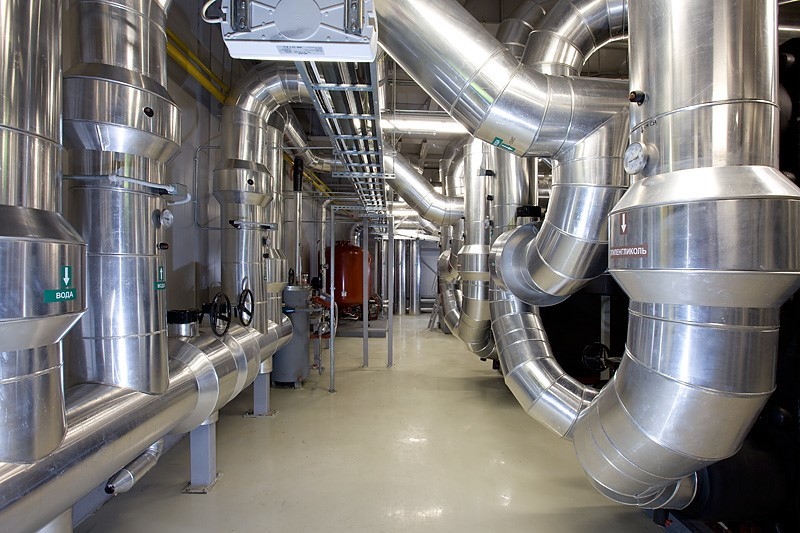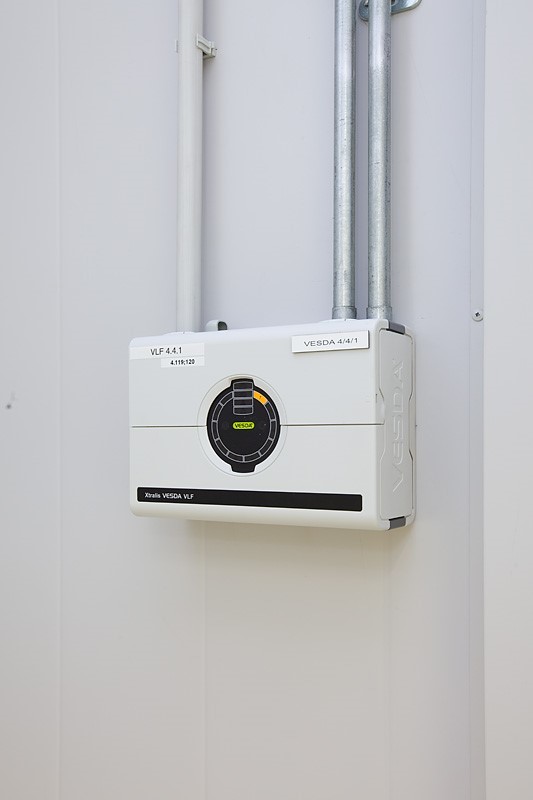How IaaS provider to choose a data center to host the cloud: IT-GRAD Experience

On Habré and in our blog on corporate IaaS, we write a lot about how the use of clouds can be useful for business, and tell stories of specific companies that have decided to transfer infrastructure (here are a couple of such examples: one or two ). However, so far we have not touched on the topic of building the infrastructure of the IaaS provider itself - to fix this, today we will talk about what criteria guided us when choosing a data center, and show the data center where the IT-GRAD cloud is located now.
What to look for
When choosing a data center, we paid attention not only to guarantees of reliability (how to check the reliability of the data center we wrote here ), but also other important characteristics. Among them:
')
- Infrastructure - quality of power supply, cooling, the presence of fire extinguishing systems;
- The organization of safety of the equipment and the intellectual property placed on it;
- Ensuring business continuity;
- The economic feasibility of using a specific data center.
All these elements are very important - they can be compared with parts of a puzzle. If you remove at least one, the whole picture will not work.
According to the analysis of various options, we stopped at the Moscow DataSpace data center - one of the largest data centers in Russia. It is located in a separate building with 12 engine rooms and 1000 racks. DataSpace has passed the full Tier III Gold certification cycle by the Uptimes Institute standards, which confirms its high reliability. But we will look at various aspects of placement in this data center more closely.
Power Supply: Redundancy and PUE
The Uptime Institute describes more than 4,000 power-related incidents, many of which occurred due to the negligence of one of the most important components of the data center infrastructure - power supply.
In our chosen data center, the reliability of power supply systems is ensured by redundancy according to the N + 1 scheme - each computer room receives energy from two power distribution devices. Each of them, in turn, is connected to two separate circuits. In the premises of the data center organized six independent power supply circuits.

Critical mechanical systems are connected through switchboards with dual independent power. Each of the power supplies is connected to separate UPS systems and diesel generators, which provide operation for 84 hours.

To determine the efficiency of power supply to the data center, a special coefficient PUE is used - it shows that all the electricity supplied to the facility is spent exclusively on server racks, and not on their cooling, lighting or other related processes. The PUE value is obtained by dividing the total energy consumption of the entire data center by the amount of electricity consumed by the equipment. The higher the result, the more energy is spent on related processes, the closer the value is to one, the efficiency is closer to 100%.
Cooling: how everything works
Cooling engineering systems and racks of a typical data center takes about 40% of all electricity. However, with the help of automation technology (Building Management System), consumption rates for various subsystems can be reduced by almost 60%.

In DataSpace, such a system provides control and support at a given level of temperature, humidity, air quality, lighting systems, uninterrupted power, fire alarm, etc. Also, chillers and air coolers are installed according to the N + 1 distributed backup scheme. To ensure the best possible cooling of the equipment, cold air is supplied under the raised floor.
Security organization
The perimeter of the data center building and all interior spaces are equipped with an eight-level security system - this is in addition to armed guards on the site. There is a strict pass control - even the employees who have forgotten their passports will not be able to get to their workplace. Video cameras and motion sensors provide full coverage of the entire territory of the data center.
To get to the reception area, you need to go through armored sluice cabins, each of which is equipped with readers of access cards and biometric data and works on the principle of scanning a palm print.

To enter the machine rooms and rooms with critical equipment is not only provided with an access card, biometric data is also scanned - retina and palm prints.

Firefighting
All server rooms and rooms with critical data center equipment are equipped with a modern, centralized gas extinguishing system using a colorless and odorless NOVEC 1230 substance.

Also used is a very early fire detection system - the VESDA aspirating smoke detector. Sensors located in different parts of the room monitor the fire situation — air samples are evaluated using a calibrated fire detection system.

In addition, even if the fire does start, the data center will be able to withstand it for quite a long time - its walls, floor and ceiling have a two-hour fire resistance.
Connection
One of the most important moments that can make the use of a particular data center impossible, is the availability of free choice of telecommunications service providers. There are no problems with this in DataSpace - main highways of more than 20 major telecom operators such as Rostelecom, Gars Telecom, AKADO Telecom, Beeline, Megafon, MTS, Orange and many others come to the data center. Also in the building there are two independent telecommunication inputs from two different MGTS wells at a distance of more than 100 meters from each other and six different 100-millimeter cable channels leading to the main data entry point (MPoE) and to the additional data entry point (SPoE).
Conclusion
IaaS-provider is obliged to pay serious attention to the choice of site for placement of its own equipment in order to increase the reliability of its own services. The data center should not only meet the requirements in different areas from power supply to security, but also have a "margin of safety" for a long time to come.
Source: https://habr.com/ru/post/275553/
All Articles